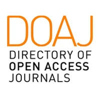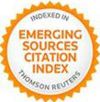Abstract
The paper presents a new parametric approach for the renewal of blighted urban areas through the design and the implementation of interactive installations. Said installations are based on a precise algorithm able to capture the sound waves, emitted by the visitors, and to translate them in light signals. The syntesis process is elaborated with digital computation: microcontroller Arduino for the correlation between the sound impulses acquired (input) and the coloured lights emitted (output); parametric software Grasshopper for the control of the output variability. The digital technological system allows users to customize the installation by tuning the colours and the intensity of the lights. The model designed through such a parametric approach (envisaging these fields: technical and technological; social; economic; environmental) could be implemented in different social and urban context, guarantying versatility, repeatability and sustainability.
Keywords
Full Text:
PDFDOI: http://dx.doi.org/10.2423/i22394303v8n2p15
References
Albers, J. (2013). Interaction of Colour. London: Yale University Press.
Banzi, M. & Shiloh, M. (2015). Arduino. La guida ufficiale. Milan: Tecniche nuove.
Cairncross, F. (1997). The death of distance: How the communications revolution will change our lives. Boston, Massachussets: Harvard Business School Press.
Clare, K. (2013). The essential role of place within the creative industries: Boundaries, networks and play. Cities, n.34, 52-57.
DCMS (2004). Culture at the heart of regeneration. London: DCMS.
Della Lucia, M. & Trunfio, M. (2018). The role of the private actor in cultural regeneration: Hybridizing cultural heritage with creativity in the city. Cities, Elsevier (in press).
Drake, G. (2003). ‘This place gives me space’: Place and creativity in the creative industries. Geoforum, 34, 511–524.
Evans, G. (2003). Hard-branding the cultural city – From Prado to Prada. International Journal of Urban and Regional Research, 27(2), 417–440.
Evans, G. & Shaw, P. (2004). The contribution of culture to regeneration in the UK: a review of evidence. London: DCMS.
Huron, D. (2006). Sweet Anticipation: Music and the Psychology of Expectation. Cambridge, Massachusetts: The MIT Press.
Ito, T. (1998). L’immagine dell’architettura nell’era dell’elettronica. Domus, n.800, 28-29.
Koolhaas, R. (2006). Junk Space. Per un ripensamento radicale dello spazio urbano. Rome: Quodlibet.
Landry, C. (2000). The creative city: A toolkit for urban innovators. London: Earthscan.
Le Corbusier. (1957). La Charte d’Athènes (IV CIAM - Congrès Internationaux d’Architecture Moderne). Paris: Les Éditions de Minuit.
Lévy, P. (1997). Cybercultura. Gli usi sociali delle nuove tecnologie. Milan: Feltrinelli.
Magnaghi, A. (2010). Il progetto locale. Verso la conoscenza di luogo. Turin: Bollati Boringhieri.
Margolis, M. (2011), Arduino CooKbook, Sebastopol: O’Reilly Media.
Mazzoli, C. & La Piccirella, F. (2017). Lumières Sonores. In Terrin, J.-J. Les cinq premières minutes. Catalogue de l’exposition, Marseilles: Art-cade*.
Mello, P. (2002). Metamorfosi dello spazio. Annotazioni sul divenire metropolitano. Turin: Bollati Borighieri.
O’Brien, R. (1992). Global financial integration: The end of geography. London: Pinter Publishers.
Oosterhuis, K. (2003). Hyperbodies. Toward an E-motive Architecture. Berlin: Birkhäuser.
Payne, A. & Johnson, J. K. (2018). Interactive Prototyping. An Introduction to Physical Computing using Arduino, Grasshopper, and Firefly. Retrieved from: http://www.fireflyexperiments.com/resources/
Punziano, G. & Terracciano, A. (2017). Urban Voids: renewal and regeneration experiences in Naples. TeMA - Journal of Land Use, Mobility and Environment, 10 (3), 299-323.
Roberts, P., Sykes, H. & Granger, R. (2016). Urban regeneration. London: Sage.
Smith, M. K. (2007). Space, place and placelessness in the culturally regenerated city. In Richards, G. Cultural tourism: Global and local perspectives (pp. 91–119), New York, NY: Routledge.
Tang, W. S. (2016). Creative industries, public engagement and urban redevelopment in Hong Kong: Cultural regeneration as another dose of isotopia?. Cities, 56, 156–164.
Terrin, J.-J. (2015), Dal cucchiaio alla città / From the spoon to the town. In IN_BO. Ricerche e progetti per il territorio, la città e l'architettura -Insegnare e fare architettura oggi. Un’inchiesta globale, Vol. 6, n. 3, 127-131.
Zenker, S. (2009). Who's your target? The creative class as a target group for place branding. Journal of Place Management and Development, n.2(1), 23–32.
Zubin, K. (2012), Generative Algorithms (using GrassHopper), Morphogenesism Education. Retrieved from: https://issuu.com/pabloherrera/docs/generative_algorithms_f07be9052a219d
Article Metrics
Metrics powered by PLOS ALM
Refbacks
- There are currently no refbacks.
Copyright (c) 2019 Cecilia Mazzoli, Alessandro Fabbri, Federico La Piccirella

This work is licensed under a Creative Commons Attribution-NonCommercial-NoDerivatives 4.0 International License.
SCIRES-IT, e-ISSN 2239-4303
Journal founded by Virginia Valzano





